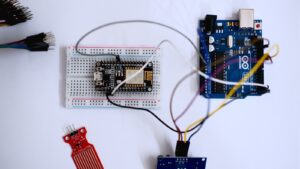Ensuring Firmware Integrity in IoT Devices
Implementing Robust Cryptographic Measures
Ensuring the integrity and authenticity of IoT device firmware updates is critical for maintaining secure and reliable IoT ecosystems. One of the best practices in this domain is the implementation of robust cryptographic measures. Cryptographic signatures and hashes can be used to verify that the firmware update has not been tampered with during transmission. In technologically advanced regions like Riyadh and Dubai, where IoT applications are widespread, these measures are indispensable. For instance, a smart home system in Dubai might utilize digital signatures to verify that a firmware update for a connected thermostat comes from a trusted source. This process ensures that only authentic and untampered firmware is installed, protecting the device from potential security breaches and operational failures.
Utilizing Secure Boot Processes
Secure boot processes are another essential practice for ensuring firmware integrity in IoT devices. Secure boot verifies the integrity of the firmware before it is executed, ensuring that only authorized firmware runs on the device. This is particularly important in sectors such as healthcare and critical infrastructure in Saudi Arabia, where device reliability is paramount. For example, medical devices in Riyadh’s hospitals utilize secure boot processes to ensure that firmware updates have not been compromised, thereby maintaining the safety and effectiveness of patient care equipment. By incorporating secure boot mechanisms, businesses can prevent unauthorized firmware from executing, thus safeguarding their IoT devices from malicious modifications.
Regularly Auditing and Monitoring Firmware
Regular auditing and monitoring of firmware updates are vital for maintaining the integrity and authenticity of IoT devices. Continuous monitoring helps detect any anomalies or unauthorized changes in the firmware. In the UAE, companies in the finance sector use automated tools to audit and monitor firmware updates on their IoT-enabled ATMs and security systems. By implementing regular audits, these organizations can quickly identify and address potential security issues, ensuring that their devices operate securely and efficiently. This proactive approach to firmware management helps in maintaining a high level of trust and reliability in IoT deployments.
Ensuring Firmware Authenticity in IoT Devices
Establishing a Trusted Supply Chain
Establishing a trusted supply chain is crucial for ensuring the authenticity of IoT device firmware updates. Businesses must work with reputable manufacturers and vendors who follow stringent security practices. In Dubai, smart city projects often involve multiple stakeholders, including hardware manufacturers, software developers, and service providers. By ensuring that all parties adhere to rigorous security standards, the authenticity of firmware updates can be maintained. For example, a smart grid in Riyadh may require all its suppliers to use secure development practices and provide verifiable proof of authenticity for all firmware updates. This approach minimizes the risk of counterfeit or malicious firmware being introduced into the system.
Implementing Multi-Factor Authentication for Updates
Implementing multi-factor authentication (MFA) for firmware updates adds an additional layer of security to ensure authenticity. MFA requires multiple forms of verification before allowing a firmware update to proceed. This can include a combination of passwords, cryptographic keys, and biometric verification. In Saudi Arabia, where cybersecurity is a national priority, critical infrastructure projects often employ MFA to safeguard firmware updates. For instance, an oil refinery in Riyadh might use MFA to ensure that only authorized personnel can initiate and approve firmware updates on its IoT-enabled monitoring systems. By using MFA, businesses can significantly reduce the risk of unauthorized updates compromising their IoT devices.
Ensuring End-to-End Encryption
End-to-end encryption is essential for protecting the authenticity of firmware updates as they are transmitted from the server to the IoT device. This encryption ensures that the update cannot be intercepted and altered by malicious actors during transit. In Dubai’s bustling financial sector, where IoT devices are used extensively for transactions and data collection, end-to-end encryption is a standard practice. By encrypting firmware updates, companies can ensure that the updates arrive at the device intact and unaltered. This practice not only protects the device but also maintains the overall security and integrity of the IoT ecosystem.
Conclusion
Ensuring the integrity and authenticity of IoT device firmware updates is crucial for maintaining secure, reliable, and efficient IoT systems. Implementing robust cryptographic measures, utilizing secure boot processes, and regularly auditing firmware are essential practices for ensuring integrity. Establishing a trusted supply chain, implementing multi-factor authentication, and ensuring end-to-end encryption are key strategies for maintaining authenticity. In regions like Saudi Arabia and the UAE, where technological advancements and IoT deployments are rapidly growing, these practices are vital. By adopting these best practices, businesses can protect their IoT devices from security threats, ensuring their operations remain secure and efficient.
—
#IoTDeviceFirmwareUpdates, #FirmwareIntegrity, #FirmwareAuthenticity, #IoTSecurity, #IoTBestPractices, #SecureFirmwareUpdates, #ModernTechnologySolutions, #BusinessEfficiency













